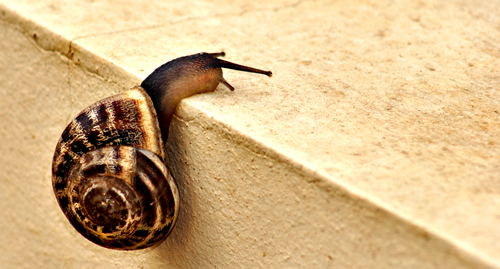I recently wrote about the 24/7 lab – one model for a successful research lab. The original Nature article about the lab generated a lot of discussion, including a thoughtful response in Nature from Julie Overbaugh.
For those whose working style and needs are met by the 24/7 set-up, let them enjoy it. However, it’s not a template for the majority. Most researchers seek to balance their passion for science with other important interests and relationships in their lives. Research leaders face the triple demands of e-mail responsiveness, increasing admin demands and securing funding (while success rates drop). These three hamper the quest for a life balance where work does not squeeze all else out.
As Overbaugh illustrates through many examples, the research on creativity and innovation is pretty clear: down times are good for us! We benefit from time for ourselves that is not just focused on work.
When I was faced with the challenge of leading the development of a design system for gas turbines, I was daunted by the knowledge that four predecessors had failed with the project. One Sunday, early in the project, I hiked from Baden to Zurich along the Jura Höhenweg with my mentor and a visiting consultant. In the course of a wide-ranging conversation, we returned time and again to the key design bottlenecks in the system. By the time we reached the Zurich carnival parade, we had identified the key to a state-of-the-art design and knowledge management system.
One danger that the 24/7 Lab brings, is to measure people’s performance by the clock. In his article, Balancing Act, Quirin Schiermeier describes research by Wang et al:
“The working habits of scientists are poorly monitored, but an analysis of download patterns of scientific literature across all fields suggests that many researchers work after hours or at weekends (X. W. Wang et al. J. Informetr. 6, 655–660; 2012). Using a tool devised by Springer publishing, the researchers tracked when people downloaded papers from the publisher across five weekdays and four weekend days in April 2012. Working late into the night is particularly widespread among scientists in the United States, whereas Chinese researchers work many hours on the weekend, they found (see ‘Literature searches around the clock’).”
More is expected of researchers these days, and some of the practices of yesteryear sound alien to the modern ear. For example, when I was in Rutherford Appleton, it was customary for the department to take a morning coffee break and an afternoon tea break together. We talked about almost everything (except work). However, whenever someone was not making progress, they would mention it and out would come a piece of paper of a napkin and within minutes enough ideas had been brainstormed to keep them busy and productive in the search for a solution. The modern ear likes the solutions and finds two extended breaks a day (plus lunch!) “too much”.
The straight path is not always the quickest. Or as my Latin teacher used to say, festina lente – make haste slowly.
What are your festina lente strategies?
Photo: lisasolonynko


CG Jung agrees!